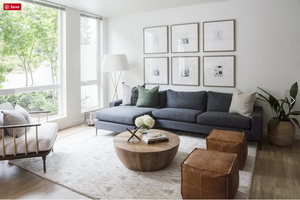Blog Information
- Posted By : Nidolast taylor
- Posted On : Feb 04, 2025
- Views : 52
- Category : General
- Description : The Art and Science of Commercial Interior Design: Creating Inspiring Workspaces
Overview
In today's fast-paced business world, commercial interior design plays a pivotal role in shaping work environments that are both functional and aesthetically pleasing. Whether it’s an office, retail store, hotel, or restaurant, a well-designed commercial space can enhance productivity, improve customer experience, and elevate brand identity. A successful interior design strategy balances creativity with practicality, ensuring a space is not only visually appealing but also efficient and comfortable.
Understanding Commercial Interior Design
Commercial interior design focuses on designing spaces that cater to business needs. Unlike residential design, which prioritizes personal comfort, commercial design emphasizes efficiency, safety, and branding. It integrates architecture, furniture, lighting, and technology to create cohesive environments that align with the company’s goals and values.
A professional commercial interior designer considers various factors, such as spatial planning, accessibility, material durability, and environmental sustainability. They collaborate with architects, engineers, and contractors to transform a concept into reality while ensuring compliance with building codes and regulations.
The Key Elements of Commercial Interior Design
-
Space Planning and Layout
Effective space planning is essential for maximizing functionality. Designers analyze workflow, traffic patterns, and ergonomic considerations to create layouts that enhance efficiency. For example, in an office setting, open floor plans promote collaboration, while designated quiet areas support focused work.
-
Aesthetic Appeal and Branding
A commercial space should reflect the company’s brand identity. Through strategic use of colors, textures, and design elements, designers create an environment that aligns with the brand’s values and message. Retail stores, for instance, use color psychology and lighting to influence customer behavior and enhance the shopping experience.
-
Furniture and Fixtures
The choice of furniture impacts both aesthetics and functionality. Ergonomic office chairs, modular workstations, and comfortable seating in waiting areas contribute to employee and customer satisfaction. Additionally, the durability and maintenance of materials play a crucial role in long-term usability.
-
Lighting Design
Proper lighting enhances ambiance and functionality. Natural light improves mood and productivity, while artificial lighting is carefully designed to suit different areas. Task lighting in workspaces, ambient lighting in hospitality settings, and accent lighting for highlighting products in retail stores are all integral to commercial design.
-
Technology Integration
Modern commercial spaces require seamless integration of technology. Smart lighting systems, automated climate control, digital displays, and collaborative tools enhance efficiency and user experience. A well-planned design ensures technology complements the overall aesthetic and functionality.
-
Sustainability and Eco-Friendly Design
With a growing emphasis on sustainability, many businesses prioritize eco-friendly interior design. Using recycled materials, energy-efficient lighting, and biophilic design elements not only reduces environmental impact but also enhances employee well-being and corporate responsibility.
Why Invest in Professional Commercial Interior Design?
A well-designed commercial space offers numerous benefits, including increased productivity, better customer engagement, and improved employee satisfaction. Professional interior designers bring expertise, creativity, and technical knowledge to create spaces that align with business objectives. Whether revamping an existing space or designing from scratch, investing in expert design ensures a lasting and positive impact.
Commercial interior design is more than just aesthetics; it’s about creating environments that foster growth, efficiency, and innovation. A well-planned and beautifully designed space can set a business apart and contribute to its long-term success.
-
